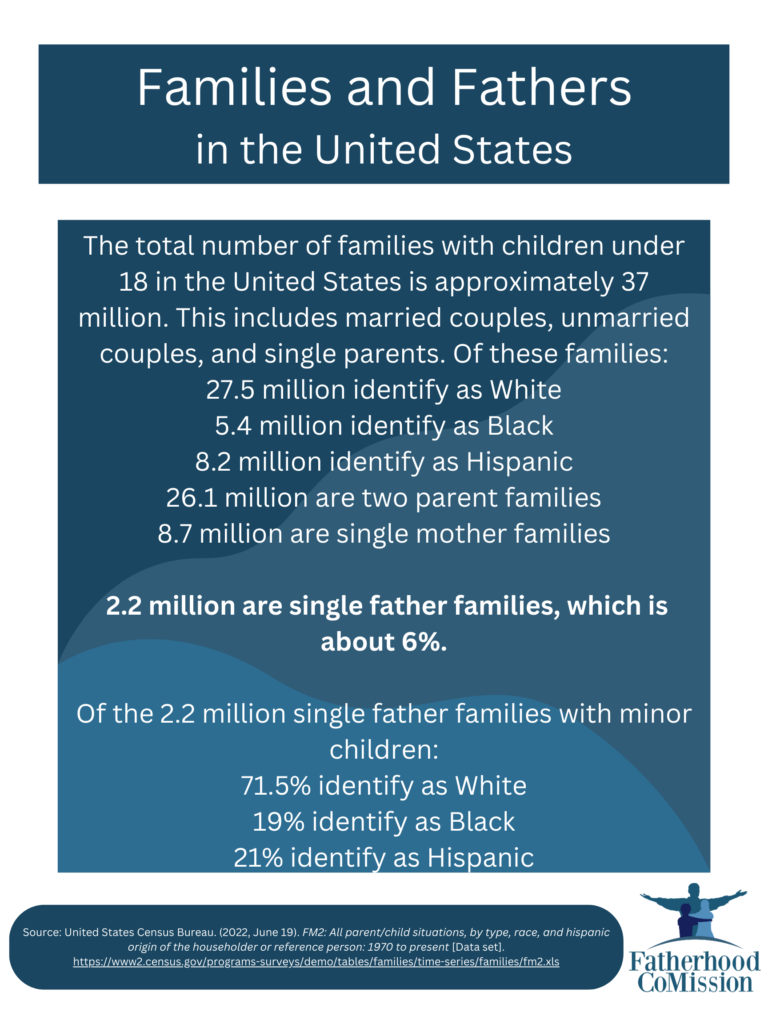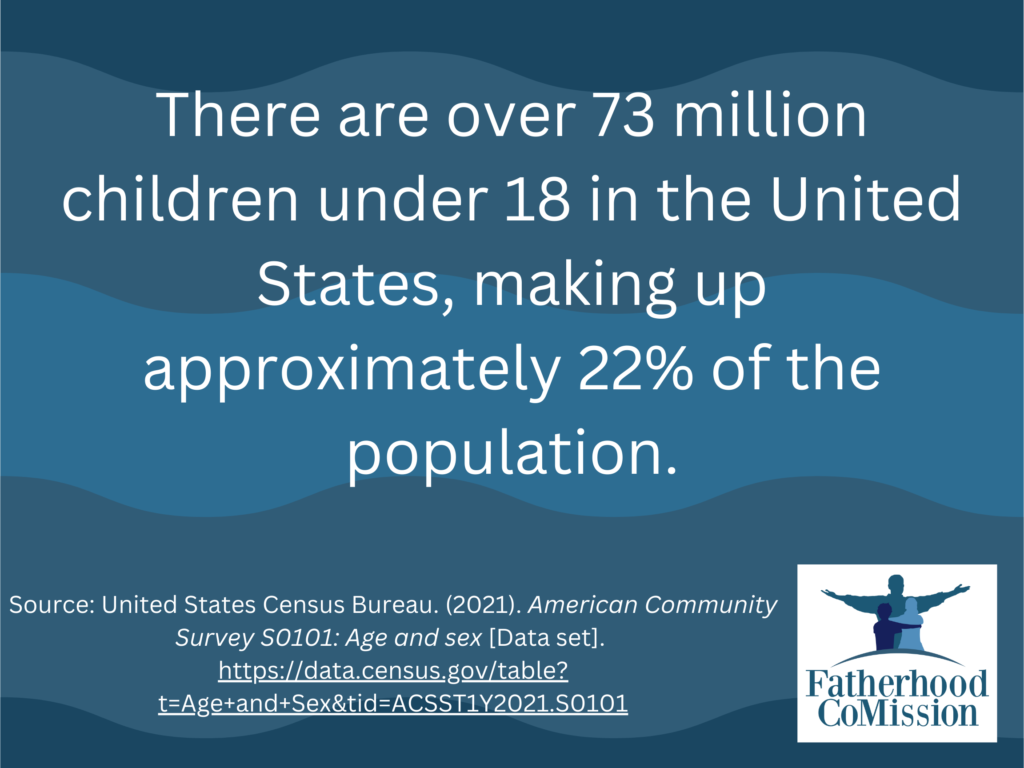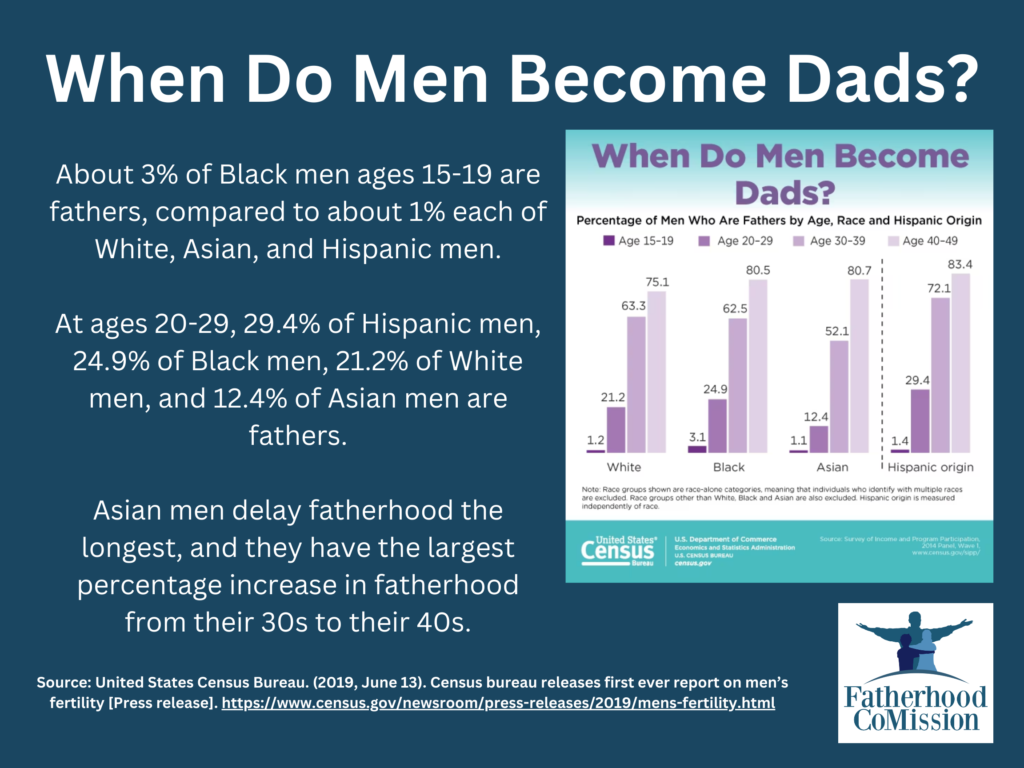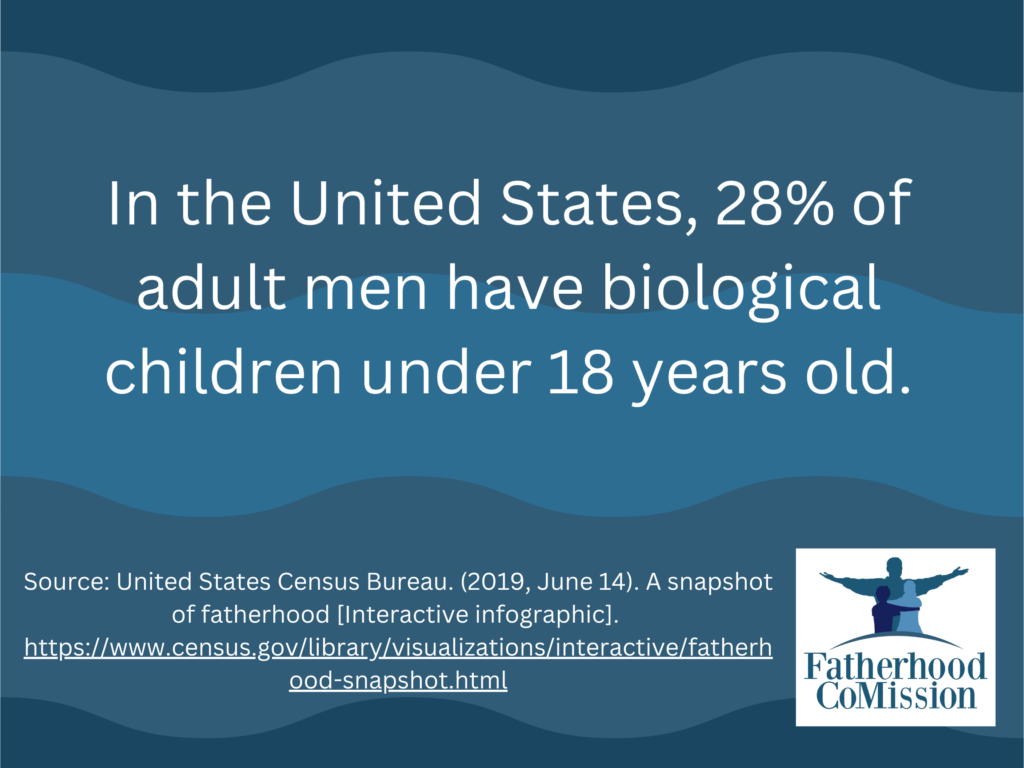The following research and statistics on families and fathers in the United States were produced by Fatherhood CoMission to serve our partners in fatherhood and family leadership. We hope you will use the following facts to better understand the issues you and those you serve are facing each day. We hope that knowing the research will help you influence more people so we can guide the next generation of fatherhood and family leaders.
Please, share these statistics as you see fit with your network and community. Please link back using the URL to this page for reference. Thank you.
Facts of Families and Fathers in the United States

Facts on Fathers in the United States
In the United States, 28% of adult men have biological children under 18 years old.
Source: United States Census Bureau. (2019, June 14). A snapshot of fatherhood [Interactive infographic].
Facts on Children Under 18 in the United States
There are over 73 million children under 18 in the United States, making up approximately 22% of the population.
Source: United States Census Bureau (2021). American Community Survey S0101: Age and sex [Data set].

The 73 million children in the United States are 53% White, 13% Black, 5% Asian, 19% Mixed Race, and 26% Hispanic or Latino of any race.
Source: United States Census Bureau. (2021). American Community Survey S0901: Children characteristics [Data set].
There are 5.97 million children living in single father households, making up 8% of households with minor children. Minor children in single father households are 48% White, 14% Black, 3% Asian, 21% Mixed Race, and 33% Hispanic or Latino of any race.
Source: United States Census Bureau. (2021). American Community Survey S0901: Children characteristics [Data set].
There are 48.9 million children under 18 living in a household with a married couple (does not include unmarried partners), making up 67% of children.
Source: United States Census Bureau. (2021). American Community Survey S0901: Children characteristics [Data set].
Children with involved fathers are at lower risk of poor outcomes including infant mortality, emotional and behavioral problems, poor school performance, alcohol and substance abuse, and criminal activity.
Source: National Fatherhood Initiative. (2019). The strengths of father presence [Infographic].
When Do Men Become Dads? (Facts on Fathers by Age and Race)

About 3% of Black men ages 15-19 are fathers, compared to about 1% each of White, Asian, and Hispanic men. At ages 20-29, 29.4% of Hispanic men, 24.9% of Black men, 21.2% of White men, and 12.4% of Asian men are fathers. Asian men delay fatherhood the longest, and they have the largest percentage increase in fatherhood from their 30s to their 40s.
Source: United States Census Bureau. (2019, June 13). Census bureau releases first ever report on men’s fertility [Press release].
The total number of families with children under 18 is about 37 million. This includes married couples, unmarried couples, and single parents. 27.5 million of these families identify as White, 5.4 million as Black, and 8.2 million as Hispanic. 26.1 million are two parent families, 8.7 million are single mother families, and 2.2 million, about 6%, are single father families. Of the 2.2 million single father families with minor children, 71.5% identify as White, 19% identify as Black, and 21% identify as Hispanic.
Source: United States Census Bureau. (2022, June 19). FM2: All parent/child situations, by type, race, and hispanic origin of the householder or reference person: 1970 to present [Data set].
Additional Facts on Families and Fathers in the United States
The number of fathers in the United States is estimated to be 72 million, which is approximately 55% of men aged 16 and over. This includes men with at least one biological child of any age.
Source: United States Census Bureau. (2022, June 19). Father’s Day: June 19, 2022. Press Release Number CB22-SFS.91 [Infographic].
When a child is raised in a father-absent home, they are more likely to live in poverty, face abuse and neglect, drop out of school, become pregnant as a teen, abuse drugs and alcohol, suffer from obesity, commit a crime, and go to prison.
Source: National Fatherhood Initiative. (2019). The father absence crisis in America [Infographic].
Approximately 70% of men took leave within 12 weeks of the birth of their first child between 2016-2020 which is a 20% increase from 1981-1985. It is estimated that 204,000 men were stay-at-home dads in 2021.
Source: United States Census Bureau. (2022, June 19). Father’s Day: June 19, 2022. Press Release Number CB22-SFS.91 [Infographic].
Fathers in the United States have increased their time spent on childcare since 1965, and 57% of fathers consider parenthood extremely important to their identity.
Source: Livingston, G., & Parker, K. (2019, June 12). 8 facts about American dads. Pew Research Center.
This Facts on Fathers and Families research was conducted by: Fatherhood CoMission and researchers Bettina Holmes and Jeffrey Shears




